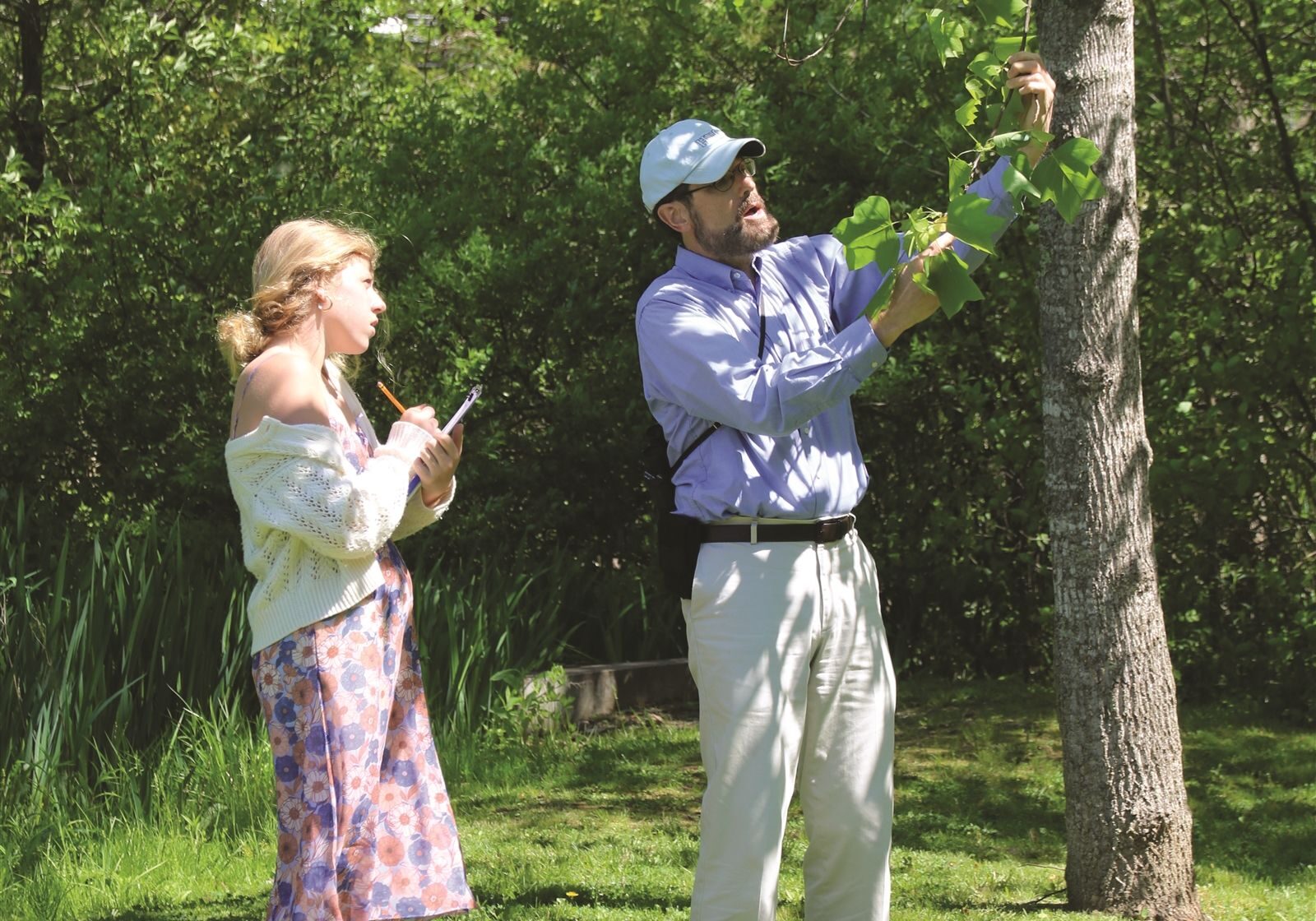Scientific Thinking in the Seventh Grade

Renbrook’s seventh grade Life Science course, with its units on dendrology, ornithology, and canine cognition, is a good place to see active scientific thinking at work.
Howard Wright, Science Department Head, has built new discoveries about communication and community among trees into the dendrology unit. Our students study the actual trees on campus, but they go beyond identification and anatomy. Mr. Wright exposes them to the work of Peter Wohlleben in The Hidden Life of Trees, uncovering a new way of understanding what goes on underground in the forest. They learn about Suzanne Simard and Hope Jahren, pioneering women scientists who faced resistance and derision. Their theories are now accepted because of their ability to wrestle with uncertainty, to question their assumptions, and to devote years of meticulous work to proving the validity of their results. Seventh graders’ end-of-year journals reveal that they are deeply impressed with the ongoing evolution of scientific thought.
Mr. Wright points out that Neil Degrasse Tyson and Peter Wohlleben have written about the importance of language in engaging the public in scientific knowledge and scientific thinking. They emphasize using language that connects, breaking the old bias for clinical, impersonal language. So does Jane Goodall, who favors naming animals under study, rather than giving them numbers. Robin Wall Kimmerer is an ethnobotanist, author of Braiding Sweetgrass, who observes that in the aesthetic experience of nature, students find deep motivation to gather precise data and make connections among their observations. Learning about the world involves learning to care for the world.
Howard Wright firmly believes that the social aspect of scientific thinking is vital. Students can learn the scientific method not as an end in itself, but in the process of inquiry, making enduring emotional connections that impel them to do the scut work. He inspires students to think scientifically by connecting them with their subject emotionally. Rather than memorizing abstractions like the water cycle or surveying biomes, he taps into their curiosity about the beings that surround them: trees, birds, and dogs, for example. Direct experience—reading aloud in the woods, bringing in the family dog—leads to investigation and data gathering. Our students are ready to be surprised, to find that their initial assumptions were wrong, and they are motivated to dig deeper, to learn more. Mr. Wright sees himself and Mr. Vaughan as tour guides, taking students into the local environment, directing their attention.
Renbrook’s campus offers a laboratory where students can become at home and familiar, while receiving constant reinforcement to look at it with new eyes. “They acquire a baseline knowledge of one place, their own place, toward which they feel attachment and responsibility. Then, when they travel, they compare and contrast, using their baseline knowledge to ask good questions and explore intelligently,” says Mr. Wright.
Over the years, on Flight Day, when Kaman helicopters have landed on Williams Field to be examined and wondered at by our students, Mr. Wright has asked the pilots a question. “How did you first become interested in flight?” Invariably the pilots have cited visceral childhood experiences, he recalls, “interactions with the world of gadgets, following their curiosity and doggedly pursuing it, taking things apart—not textbooks or lab experiments.” Mr. Wright and Mr. Vaughan glow with the same lifelong curiosity and enthusiasm as they talk about their students and their work of discovery.
For two years, Upper School teacher Lincoln Vaughan’91 has involved our students in an interstate effort to revive the nearly extinct American chestnut, as you’ll read in his update on the project on page 22. His seventh graders participate in the work of real scientists and experience the trial and error that comes with the discipline.
Mr. Vaughan remembers his own early interest in science, exploring outdoors, talking with his grandfather, an anthropologist, and hanging around the science department in Upper School, peppering his teachers, Mr. Wright, Ms. Kennedy, and Ms. Clifton, with questions. They gave him one of their catalogues from a scientific supply company, and he carried it around, “endlessly reading about cool stuff.”
Eventually, as a student at Boston University, he double majored in anthropology and biology. Using his customary method of hanging around experts and asking questions, he sought work at the Harvard Museum of Natural History. His job running a cash register gave him access to the distinguished professors whose offices were there. His curiosity and persistence led him to summer internships at the New York Botanical Garden and in Central America, where he became interested in human/ethical issues related to the extraction of material from indigenous plants for medical purposes.
Later Mr. Vaughan did graduate work at Yale School of the Environment, an interdisciplinary program where he could combine his interests in natural and social sciences. On a research grant in Honduras, he was immersed in thinking about language, history, memory, migration, and culture among the Mayan people there. He continued his work in anthropology at the London School of Economics.
Teaching seventh and eighth graders at Renbrook Mr. Vaughan says is “pure teaching.” Kids are laying down fundamentals in their first “real science classes.” They are learning what science is and what it is not, its possibilities and its limitations. His role is to cultivate their interest, building comfort with science as an enjoyable activity. What they’ll remember is the joy of learning.